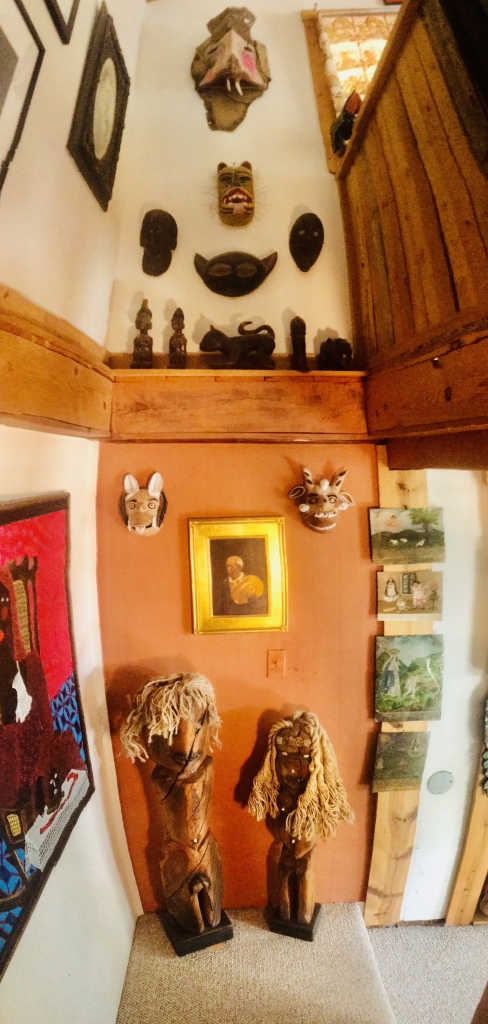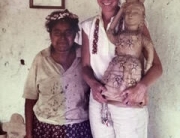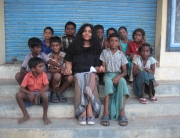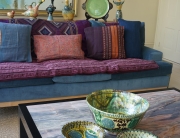
My earliest memories of appreciating the handmade came perhaps from a visit to the house of my neighbor and friend, Rigoberto Garcia Espinoza in the town of Matanzas, Cuba where I spent my childhood. Rigoberto lived in a house that his father had built along with his mother and ten siblings. The house was made of painted boards, the ceiling rafters were straight poles from nearby trees and the roof was fashioned from palm fronds. The floor was a beautifully polished mud floor that was kept immaculately clean by his mother and the children despite the fact that water came from the well outside and was brought into the house with buckets.
When I was seven years old, my parents and I moved to Havana, though the house in Matanzas remained in the family and we spent summers and long weekends there by the sea. I remember admiring the brightly painted wooden boats used by the fisherman that would launch from the little “Playa de Los Pinos” across the street from our house. At age nine, I was so inspired by these boats that I decided to make my own boat using some boards that my father had kept under his mattress to relieve his back pain.
In Havana, my father worked for one of Cuba’s Kodak distributors and he would often bring me cameras, film, and printing paper. This inspired my interest in photography and at the age of seven, I thought of myself as a photographer walking my neighborhood and taking pictures of people, their pets, and buildings. I remember and still have a photograph that I took of a fire that erupted in my neighborhood.
I continued taking pictures, never really associating them with art, but when I enrolled in college, Paul Cava, the editor of the poetry magazine “American Standard” recruited me to make photographs for the publication. After graduate school in the early ’70s, I traveled around and found photography and building a darkroom too cumbersome, so I started making drawings with pen and ink and pastels. As I really wasn’t any kind of a draftsman, I settled for what I could draw, and later discovered that my work fit into the genre of “naif” art. I was encouraged to work in this new media by photographers William Clift and Paul Caponigro who were generous in reviewing my work and mentoring me.
When I arrived in New Mexico in 1977, I was fascinated by the effects of the sun and the dry air on objects. I recalled images of Las Cruces by Edward Weston, Ansel Adams and Willard Van Dyke from my photography studies. A cow’s skull on a barbed wire fence, an old shoe that had been left behind in the desert showing the effect of nature on objects, and many others.
I started making frames for my drawings using found wood, rusty nails, old hinges, and other objects I found on walks in the mountains. This led to a move away from drawing. I became an “object maker” using, perhaps the subconscious images of Yoruba icons that were embedded in my memory from childhood and the images that abounded here from the Spanish and Native American peoples.
My career as an artist took an interesting turn in the late ’80s. I was now a father and could no longer rely on the sale of my pieces to support myself. I needed a dependable income to support my family. That is when my work as an arts administrator began. Over the years, I have had good luck in seeking and finding the opportunities that would fulfill my interests, while at the same time, supporting my family, and my art addiction. The best of these opportunities came when I was recruited to be the CEO of the International Folk Art Market. Here I could fill my senses with the handmade and become a part of the most important folk art community in the world. The artists, the people that work with me, our supporters, and all of the passionate lovers of folk art are now part of my daily world. I’m a lucky guy!
Here’s a description of the works in the photograph:
At the top is the “Elephant Man Mask” made by yours truly. Below that is a Guerrero Jaguar Mask; Immediately below is a cat mask from Nigeria. To the left and right of the cat mask are two masks from Mexico. Below them is a group of Yoruba figures with a wooden leopard from Benin. On the brown wall are two masks from Ocumicho, Michoacán, Mexico, and below that is a painting by Elias Rivera. The two figures below are my creation as well and reference African art. To the right is a group of Ex-Votos from Spain, Mexico, and Perú.
****
IFAM CEO, Stuart Ashman, is a cultural ambassador who has worked in the arts for over 30 years. He was raised in Matanzas and Havana, Cuba before his family relocated to New York where he attended the City University of New York receiving a Bachelor of Arts degree in Photography and Fine Art. His additional studies include graduate work at the Rochester Institute of Technology and personal interactions on his photography with Minor White and Paul Caponigro. He was also selected to participate in the Getty’s Museum Leadership Institute.
He served as Executive Director & Chief Curator of the Center for Contemporary Arts in Santa Fe, New Mexico. His previous experience includes postings as President and CEO of the Museum of Latin American Art; Director of the New Mexico Museum of Art; Executive Director of the Museum of Spanish Colonial Art; and an appointment by the Governor as Cabinet Secretary of the New Mexico Department of Cultural Affairs. He also served as an Expert Consultant for the United States Peace Corps and serves as Vice-Chair of the Richardson Center for Global Engagement. He has published numerous articles and exhibition catalogs and co-authored “Photography New Mexico” in 2009, “Abstract Art” in 2003 and “Harlistas Cubanos” in 2006.





